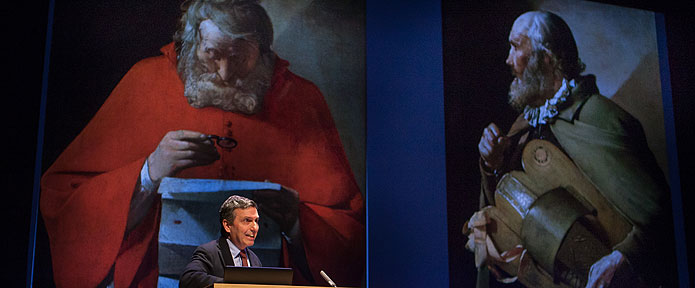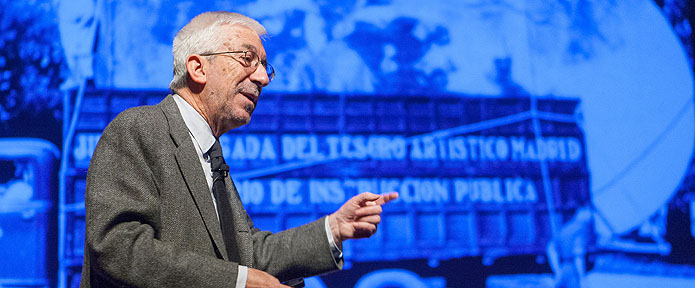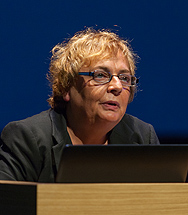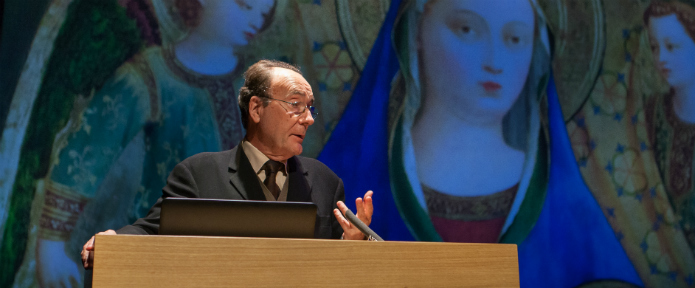A success and a finding
The works of Georges de La Tour at the Museo del Prado

The fifth of the sessions of the lecture series "El Museo del Prado: hitos históricos de sus colecciones" organized by the Fundación Amigos del Museo del Prado and the School de Philosophy y Letras at the Museo Universidad de Navarra, had as its protagonist Georges de La Tour (1593-1652), an artist little known in Spain despite having held two exhibitions dedicated to the French painter in 1994 and 2016, both at the Museo del Prado.
The head of Conservation of Italian and French painting until 1700 at the Prado Museum, Andrés Úbeda, gave a talk on November 16 at lecture in which he delved into the work of this painter, son of a baker and born in a burg of Lorraine, who became famous in his time and then was completely forgotten, so that he was not rediscovered until the twentieth century, specifically by the German art historian Hermann Voss in 1915. He immediately became a cult painter of cubists and later of surrealists, as his style was not comparable to that of any other artist.
According to Úbeda, few data are known about his training, and the possibility of a trip to Italy is debated, so that his Caravaggism may be due more to a connection with Dutch painting than to the direct influence of the Italian painter. It is also unclear who the possible patrons of his works might have been, and he is a painter around whom many unknowns still remain, despite the fact that, after his rediscovery, "La Tour became the Baroque painter par excellence", surpassing other contemporaries such as Poussin or Claude Lorrain, according to the expert.
He was a painter interested in relatively few subjects, but he returned to them again and again. Although he painted some daytime scenes, he is mainly known for his nocturnal scenes, often illuminated by candlelight. He employs in them a great Economics of means, because "he is an artist who does not show interest beyond the characters and what is strictly necessary. It is in this sense that the statement that 'La Tour is an artist who did not love the world' should be understood," explained Úbeda.
In his first genre paintings "he is a noisy and gesticulating painter, but later on he moves towards silence and the absence of gesture," said Andrés Úbeda. No gesture or movement interrupts the recollection of the characters, who appear absorbed in themselves. They are scenes, almost all of them religious, impregnated with solitude and silence.
After analyzing the main characteristics of his style and making a tour of his most significant works, Andrés Úbeda analyzed the two canvases by Georges de La Tour kept by the Prado Museum, which he described as "a success and a finding". The "success" is the Blind man playing the hurdy-gurdy (oil on canvas, 1620-1630, 86 x .5 cm), acquired by the art gallery with funds from the Villaescusa bequest at Christie's auction held in London on December 13, 1991, for the amount of 360,769,189 of the old pesetas (2,168,266.49 euros), and which entered the Museum in January 1992. It is the last important work of the French painter (together with the Saint John the Baptist of the Museum of Vic-Sur-Seille) that the international art market has offered.
The "finding" is Saint Jerome reading a letter, an unpublished painting that was located in the Palacio de la Trinidad in Madrid, headquarters of the high school Cervantes, identified by José Milicua and incorporated in 2005 to the Museum as a deposit of the Ministry of work and Social Affairs. The incorporation of both works to the Prado Museum turns the Spanish art gallery into an essential reference letter for the study of the French painter.




